Freeze Frame: Alabama’s BLOB Plays
Posted by Brian Joyce on January 18th, 2017The SEC race is difficult to project in the murky middle of the league standings, remaining fairly wide open after Kentucky (6-0), Florida (5-0) and South Carolina (4-0) have taken the top three spots. Arkansas (3-3) and Texas A&M (1-5) were popular picks to come next, but both teams have been inconsistent to this point. Could Avery Johnson’s 3-1 Alabama squad push forward to a top-five finish in league play? It depends. The Crimson Tide are led by the 19th-best defense in college basketball, according to KenPom, but their anemic offense ranks second-worst among SEC teams and is among the bottom half nationally (189th).
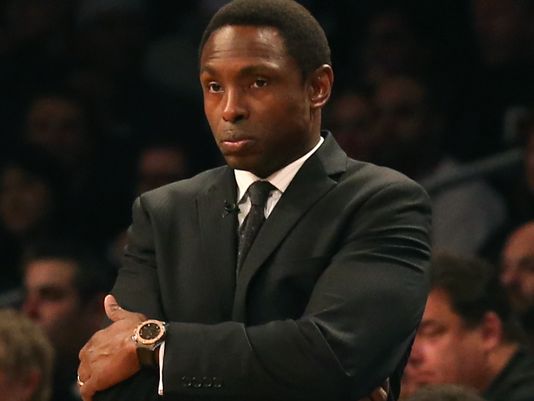
Avery Johnson would be happy to score easy buckets however he can get them. (Photo by USA Today)
In order to make that leap, Johnson’s club needs to find all the easy scoring it can get. The Tide turn the ball over on more than 20 percent of their possessions, shoot very poorly from the outside (31.4% 3FG) and rank a lowly 315th nationally in free throw percentage (64.0% FT). Those weaknesses are unlikely to improve much at this point, but one area where Alabama was effective in its loss to Florida last week was on baseline out of bounds plays (BLOBs). In this edition of Freeze Frame, we dive into the quick-hitters that Alabama uses to find easy points under the basket.
In most baseline out of bounds situations, Alabama runs a series of screens in and around the paint while backing a release player out past the half-court line. Besides providing the Tide with an outlet for a safe pass, it also removes an offensive player and his defender to create a four-on-four situation. For example, in the below frame you can see the Tide’s Riley Norris backtracking away from the play if the quick-hitter options all fail.
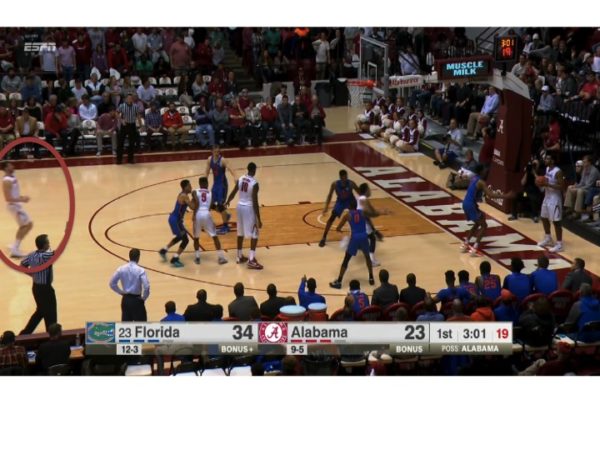
Norris retreats past the half-court line to act as a safety and take a Florida defender with him.
Norris’ defender eventually follows him, which frees up considerable space in the middle of the floor. Next, Alabama’s Ar’mond Davis cuts through the middle of the zone with Jimmy Taylor behind.
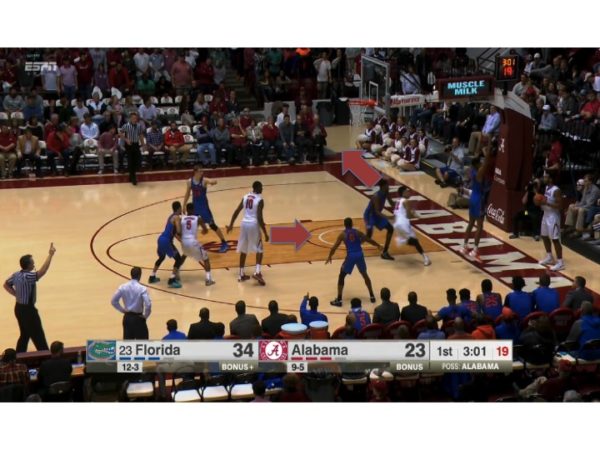
Taylor could attack the middle but nobody follows Davis.
There is some miscommunication among Florida’s defenders about who will protect the basket and who will follow Davis. Nobody follows the open shooter as he fades into the corner for an open three.
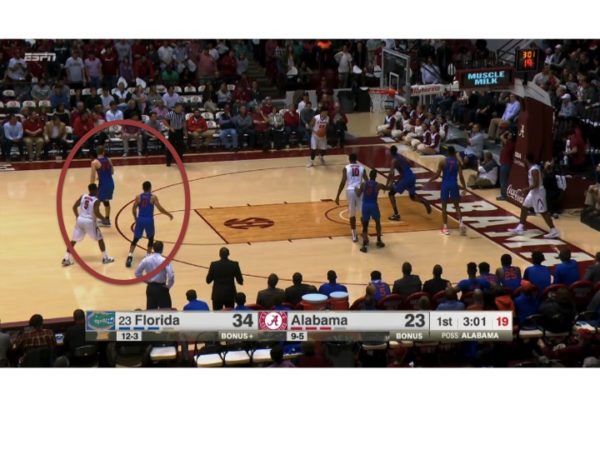
Alabama draws two Florida defenders outside of the three-point arc and away from the play.
Later in the game, the Tide overload one side of the floor to leave Norris isolated on a smaller defender, Kasey Hill. Hill fails to front him, so Norris posts up for an easy entry pass.
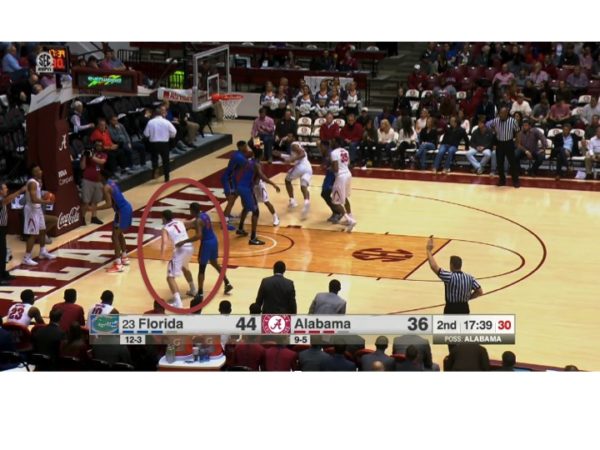
Norris posts up the 6’1″ Hill, while everyone else gets out of the way.
Devin Robinson, who was originally guarding the inbounds passer, switches with Hill as the latter chases Dazon Ingram to the perimeter. Norris is already in good position, though, and he easily backs down Robinson for a hook shot in the paint. Again, Alabama backtracks a player behind the half-court line as a safety net, drawing his defender out to the three-point line and away from the paint for any chance to help on Norris.
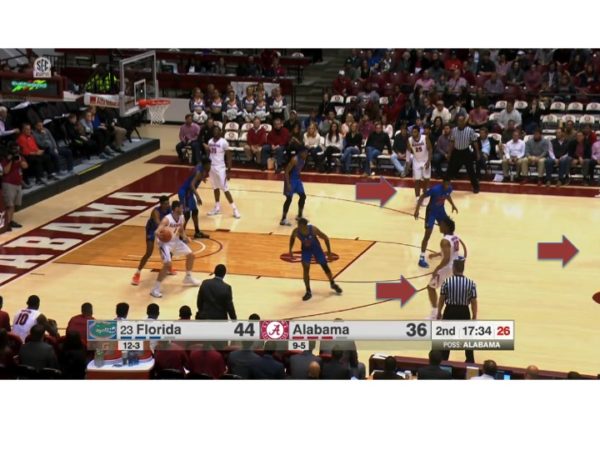
The spacing gives Norris room to go to work.
An unusual setup on baseline out of bounds plays gives Alabama opportunities for more amenable four-on-four situations with space to execute its offense. For an offense that struggles to find and convert good shots, this strategy is helpful in limited usage. If the Tide can shore up some of their offensive woes with all five players executing the offense, and convert on a few extra possessions using BLOBs, perhaps Johnson’s club could wind up a surprising late season riser toward the top of the SEC standings.












































